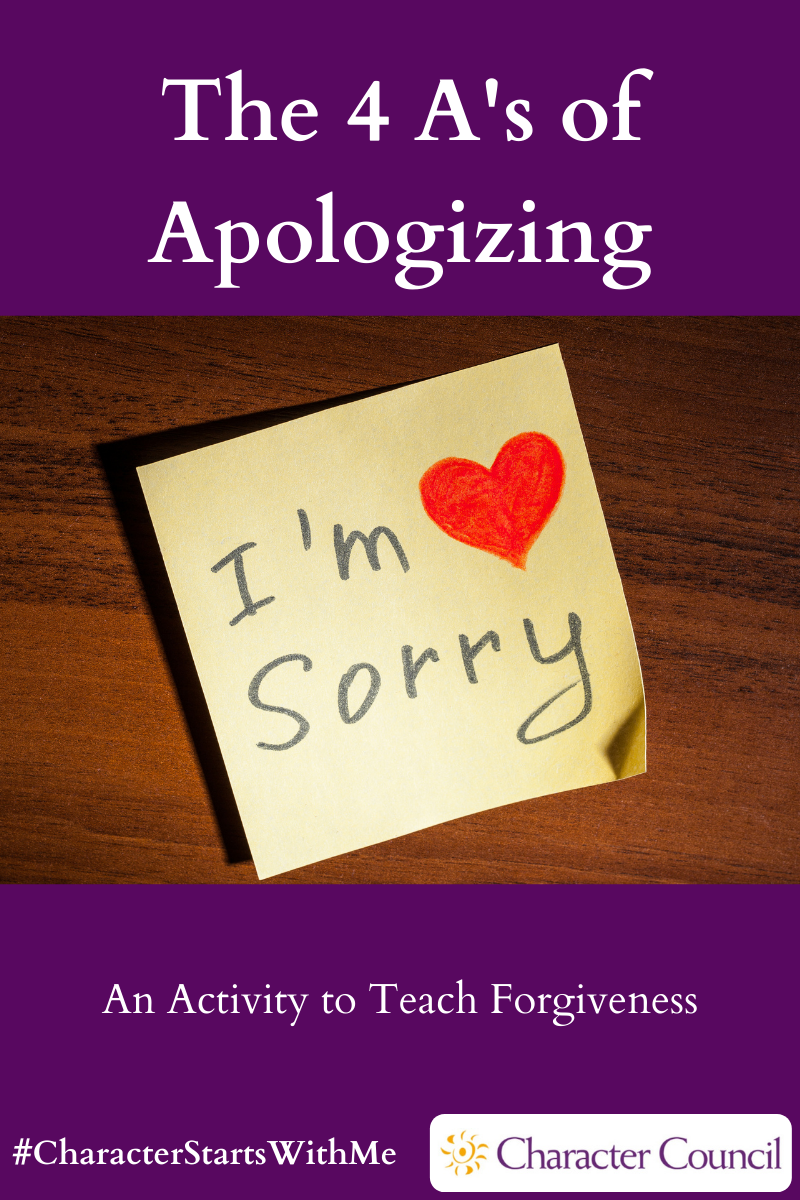
Forgiveness Activities
The activities here are fun ways to teach character. The game aspect makes the lesson more memorable. Each activity has processing questions at the end. Without processing the activity, the exercise is just a game. To make it a stronger lesson when you process it, relate the character quality to a core value that your organization promotes.
Consider picking a student to run the activity. You will need to give them time ahead of the activity to prepare. Another option is to pick a few students to run the activity for a younger classroom after you have run it for your class. Encourage your students to repeat it in the home for younger siblings or even parents.


The Gift of Forgiveness
Wrap a large empty box with a solid color paper and decorate with a bow. Explain that forgiving someone is like giving a gift to both the one who is forgiven and the one who is offering the forgiveness. Have each of the students sign their name on the package. You can do this before you start or you can have them sign when they are the forgiver. Pass the box around the room giving each child the opportunity to practice asking for and granting forgiveness using the box as a physical representation of the gift of forgiveness. These exchanges can be generic by simply saying “I’m sorry. Will you forgive me?” with a reply being “I forgive you.” After everyone has had a chance to practice you can have another round where they can volunteer to ask or grant a true, heartfelt apology to a classmate of their choosing. Optionally, you could have the students write down things they are sorry for or things that have offended them and place them in the box before wrapping.
To process this activity, ask these questions:
- When you saw the gift did you think it was someone’s birthday?
- Were you more comfortable asking for forgiveness or granting it?
- Have you ever thought of forgiveness as a gift?
- Did you know that when you gift forgiveness to someone it is also a gift to yourself?
- Do you think this will make it easier in real life to ask for or grant forgiveness?

The 4 A’s of Apologizing
Here’s a guide for helping to remember how to apologize. It is more than just a simple “I’m sorry”.
- Admit what you did wrong. You need to be specific about what you did. “I borrowed your sweater without asking first.”
- Apologize for how your choice affected the other person. “I’m sorry that it wasn’t in your closet when you needed it. Will you forgive me?”
- Ask for what you can do to make it up to the person. “I know I can’t undo what I did. I can hand wash your sweaters for you or something else if you’d rather.”
- Alter your choice in the future. “I promise to ask next time.”
Ask the class to come up with some examples. When you have come up with several, ask them if forgiveness is automatic. (No) Bring in the character trait of trust. Sometimes an apology is not accepted because there is no trust that the words mean anything. Explain that in this case, it will take proving the words with future behavior in order to earn forgiveness.

Lighten Up
Draw an outline of a heart on the board. Walk through a typical day for a student in the same grade as your class. Cite examples of events happening that the student holds a grudge about. With the mention of each one, color in the heart a little with a dark color. When the heart is fully colored, talk about what it means to have a heavy heart. Ask for suggestions of what this student could do to lighten their heart. You will be seeking resolutions to the examples that you gave initially. With each resolution, erase part of the colored in heart until all the issues have been forgiven but still leave a little area colored in. Ask who else needs to be forgiven? You still need to forgive yourself. It is important not to carry around mistakes. If you are forgiven, focus on being better rather than on past mistakes. Erase the last of the colored area. Now the heart is light again.
To process this activity, ask these questions:
- Did you feel the heart getting heavier as it was colored in?
- If any of the items on the grudge list sounded familiar to you, did you feel yourself reacting?
- What does it feel like when your heart is light?
- Have you ever heard of the word “lighthearted”? What do you think it means?
- Does that word make a little more sense now?
- What is there room for in your heart when it is empty of grudges? (more love, happiness).
- Which would you rather be – heavy hearted or light hearted?
- Do you realize that it’s a choice which you want to be?

Use one of these versions of The Cookie Thief by Valerie Cox. Read the poem to the class or let them watch the YouTube video.
To process this activity, ask these questions:
- Did you anticipate the way it ended?
- How do you think she felt?
- How do you think the owner of the cookies felt?
- Have you ever blamed somebody for something and then later found out that it was your fault?
- How long do you think it took her to forgive herself?
- What do you think she could do to make up for what she did?